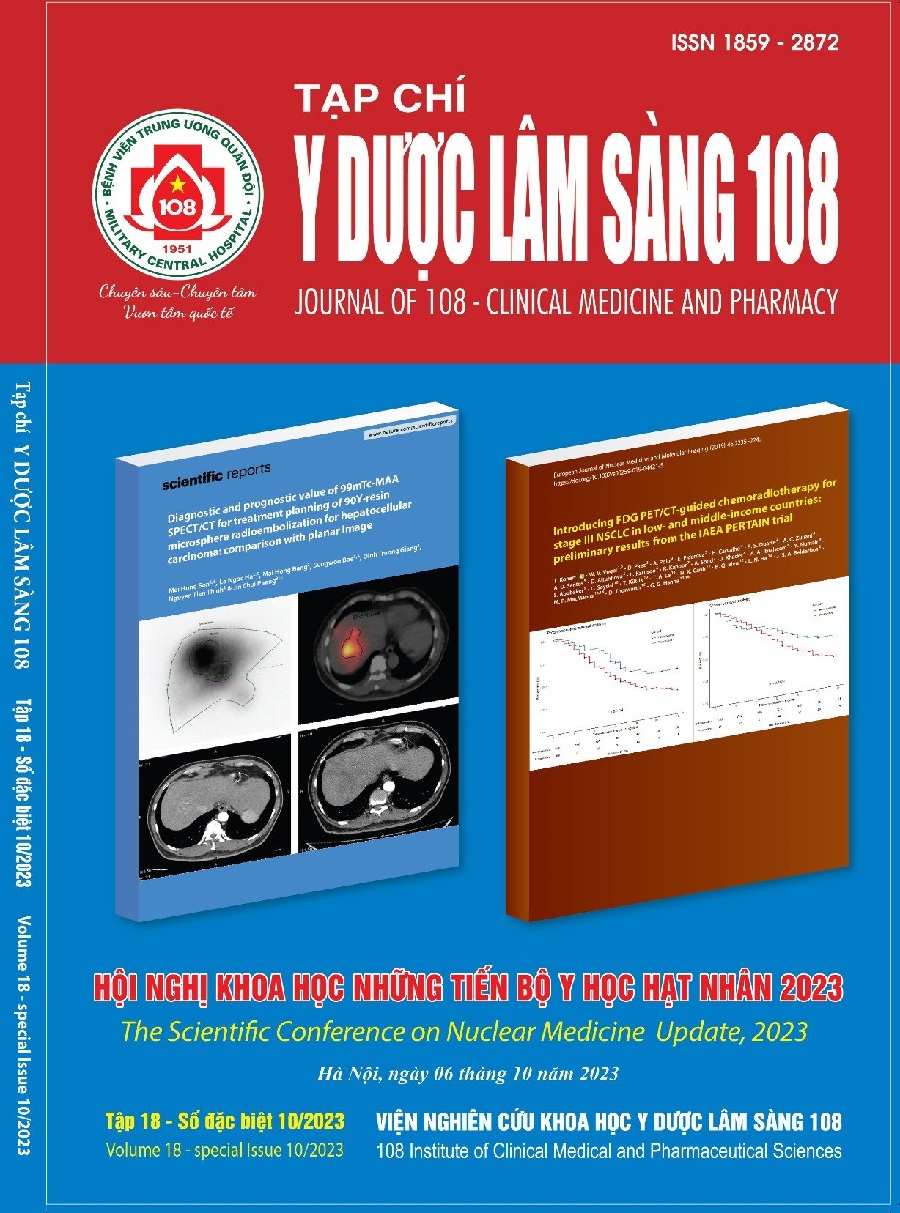Leptomeningeal metastasis causing cauda equina syndrome: Rare clinical case report and 18F-FDG PET/CT, magnetic resonance imaging
Main Article Content
Keywords
Abstract
Cauda Equina Syndrome (CES) in patients with malignancies is rare and has a very poor prognosis. According to the literature, leptomeningeal - cauda equina metastases are mostly seen in patients with lung cancer (50%), breast cancer (11%), colorectal cancer (3%), kidney cancer (10%), melanoma (8%) and lymphoma (4%). Metastatic cauda equina may occur in 1.65% of patients with primary lung cancer. Using contrast-enhanced MRI and 18F-FDG PET/CT are effective diagnostic methods. The early, accurate detection of metastatic lesions of meninges and spinal cord - cauda equina allows timely treatment orientation. In this article, we report a case of non-small cell lung cancer with meningeal metastases - cauda equina causing cauda equina syndrome detected by contrast-enhanced MRI and 18F-FDG. PET/CT at 108 Military Central Hospital.
Article Details
References
2. Stark RJ, Henson RA and Evans SJ (1982) Spinal metastases. A retrospective survey from a general hospital. Brain 105(1): 189-213. PMID: 7066672. DOI: 10.1093/brain/105.1.189.
3. Mohme M, Mende KC, Kratzig T et al (2017) Impact of spinal cord compression from intradural and epidural spinal tumors on perioperative symptoms - implications for surgical decision making. Neurosurg Rev 40(3): 377-387.
4. Kalayci M, Cagavi F, Gul S, Yenidunya S, Acikgoz B (2004) Intramedullary spinal cord metastases: diagnosis and treatment - an illustrated review. Acta Neurochir (Wien) 146: 1347-1354; discussion 1354. 10.1007/s00701-004-0386-1.
5. Potti A, Abdel-Raheem M, Levitt R, Schell DA, Mehdi SA (2001) Intramedullary spinal cord metastases (ISCM) and non-small cell lung carcinoma (NSCLC): Clinical patterns, diagnosis and therapeutic considerations. Lung Cancer 2001;31:319-23. 10.1016/S0169-5002(00)00177-X.
6. Okamoto H, Shinkai T, Matsuno Y, Saijo N (1993) Intradural parenchymal involvement in the spinal subarachnoid space associated with primary lung cancer. Cancer 72(9): 2583-2588.
7. Ampil FL, Mills GM, Burton GV (2001) A retrospective study of metastatic lung cancer compression of the cauda equina. Chest. 120(5): 1754-1755.
8. Jawahar A, Ampil F, Reddy P, Hartman G, Sathyanarayana S and Nanda A (2021) Analysis of outcome and prognostic factors in metastatic cauda equina compression: A 20-year single institution experience. Neurosurgery Quarterly 12(2): 108-113, 2021. DOI: 10.1097/00013414-200206000-00003.
9. Palmisciano P, Sagoo NS, Kharbat AF, Kenfack YJ, Alamer OB, Scalia G, Umana GE, Aoun SG and Haider AS (2022) Leptomeningeal metastases of the spine: A systematic review. Anticancer Res 42(2): 619-628. PMID: 35093859. DOI: 10.21873/ anticanres.15519.
10. Schmidt GP, Schoenberg SO, Schmid R, Stahl R, Tiling R, Becker CR, Reiser MF, Baur-Melnyk A (2007) Screening for bone metastases: whole-body MRI using a 32-channel system versus dual-modality PET-CT. Eur Radiol 17: 939-949. 10.1007/s00330-006-0361-8.
 ISSN: 1859 - 2872
ISSN: 1859 - 2872
